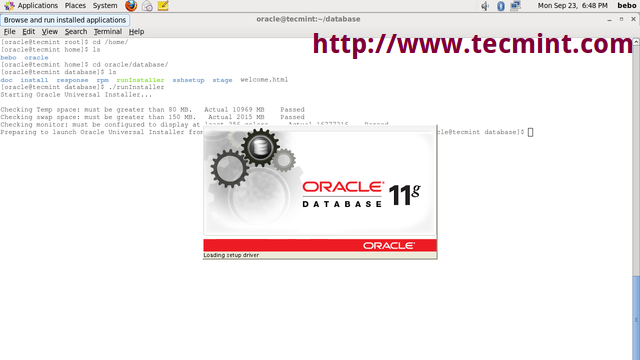Oracle Universal Installer Download 11g
How do I completely remove Oracle 11g? Uninstall all Oracle components using the Oracle Universal Installer (OUI). Download it from a trusted source, run it. The article explains Oracle database 11g Release 2 installation steps on Linux server. Login to the server as oracle user Unzip the software downloaded to a temporary location and start the Oracle Universal Installer (OUI) by executing the below command in terminal window. With Oracle 11g or 12c we were allowed to set the location of our db_home directory. But starting with Oracle Database 18c we are introduced to a new concept which is Image Based Installation. In an image based installation the Oracle Universal Installer of 18c takes the location of its setup file and assigns it as its db_home location. Download Oracle Universal Installer. Hi, I'm looking to download a Oracle Universal Installer shipping with 9.2.0.5 patchset or 10g. I need it because I'm about to.
8i | 9i | 10g | 11g | 12c | 13c | 18c | 19c | Misc | PL/SQL | SQL | RAC | WebLogic | Linux
Home » Articles » Misc » Here
The Oracle Universal Installer (OUI) is a GUI tool requiring user input to define the type of installation to be performed. Alternatively, a response file can be used to provide all the required information for the installation, so no additional user input is required. There are two ways of creating a response file.
- The Oracle installation media contains an example response file called 'db_install.rsp' in the 'response' directory. You can manually edit this file and use it for a silent installation.
- Use the example response file from the media and amend the necessary parameters inline.
- The OUI allows you to record the selections made in the GUI screens, writing them to a response file. This response file, modified or not, can then be used to perform silent installations. If you are unsure how to manually amend a response file, this option is probably the easiest way to get started.
The process of running silent installations is similar to using Kickstart for Linux installations. This article explains how to record a response file using the OUI.
The example in this article is for Oracle 11gR2, but method of using response files is the same in later versions, including Oracle 12c.
Prior to Oracle 11g, to create a response file you would start the OUI with the following command and perform an installation as normal. The '-record' parameter tells the installer to write to the response file and the '-destinationFile' parameter defines the name and location of the response file.


From 11g onward the '-record' option is no longer supported. Instead, the final OUI screen before starting the installation always gives you the option of saving a response file.

Oracle Universal Installer Download 11g 0
The response files are quite large, containing a large number of parameters and comments. The following files are examples of response files from different Oracle Database versions.
A silent installation is initiated using the following command. The '-silent' parameter indicates that this is a silent installation and the '-responseFile' parameter defines the name and location of the response file.
Some useful 'runInstaller' flags include the following. The full list is available here.
An alternative to amending a response file is to use the default response file from the media and alter the parameters inline. Here is an example of a 12cR1 installation using the default response file.
The OS group name parameters were renamed in 12cR2 to include a prefix of 'OS' and the OSRACDBA parameter is now mandatory, as shown below.
The '-ignoreSysPrereqs' and '-showProgress' parameters tell the installer to ignore any failed prerequisite checks and to show the installation process. The latter is very useful when scripting installations.
Oracle 18c is a little different as the software is unzipped into the Oracle home, then the installer is run.
Oracle Universal Installer Download 11g 32 Bit
A silent installation using the 11gR2.rsp file results in the following output.
Once the root scripts are run as instructed, the installation is complete.
For more information see:
Hope this helps. Regards Tim...